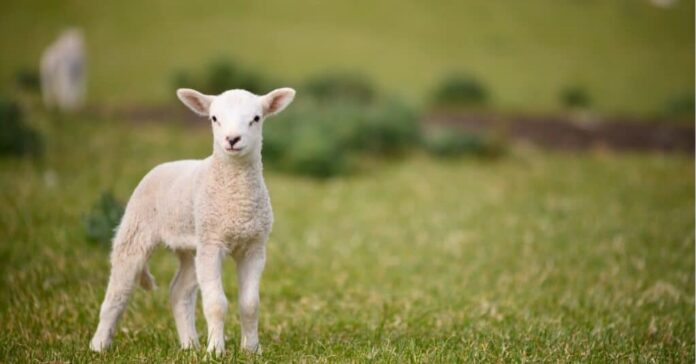How to Reduce Mortality in Kids/Lambs at Farm
Sandeep Sangwan1, Mahavir Chaudhari2, Vikram jakhar3
1Assistant professor, Khalsa Veterinary College, Amritsar, 2 Extension Specialist, Pashu Vigyan Kendra, Sirsa, Lala Lajpat Rai University of Veterinary and Animal Sciences, Hisar, 3 Assistant Professor, Guru Angad Dev Veterinary and Animal Sciences University, Ludhiana
Introduction
Goats (Capra hircus) and Sheep (Ovis aries) are an important species of livestock in India, which contribute greatly to the agricultural economy, especially in areas where the crop and dairy farming are not feasible. Goats and sheep provide a dependable source of income to 40% of the rural population below poverty line in India and to many who do not possess any land. Mortality among the pre-weaning animals is one of the major factors causing significant economic losses to the goat and sheep producers. After birth, the kids and lamb face a number of physiological, behavioral and immunological challenges affecting the survival of neonates. Diseases in goats result in mortality which ranges from 5 to 25% in adults and 10 to 40% in kids. Mortality of kids and lambs can be well reduced by proper management, prevention and early identification of diseases.
How the mortality can be reduced?
It can be reduced through management of ewes and does – It includes before breeding, During Gestation, After parturition, Vaccination and Deworming of kid and lamb.
- Before breeding– Lamb/kid mortality can be reduced by proper reproduction and health management of ewe/doe and ram/buck prior to breeding. First of all, screening should be done in flock and cull the ewe/doe with bad udder or having any other deformity. Record of past performance is also useful to predict future performance. In past performance if ewe and does having history of poor mothering ability, low milk production or difficulty in lambing and kidding then culling should be done. Give importance to BCS and flushing should always practise before breeding so that it can increased the weaning rate.
- During gestation– Nutrition should be adequate during gestation so that ewe/doe should having enough body reserve during lambing/kidding and over nutrition is also not recommended because if ewe/doe are too fat then they can face difficulty in parturition.
- Lambing and kidding management: In lamb and kid mostly, death occur in neonatal period so proper colostrum feeding should provide at least 10% of body weight. The dam should give birth in a clean environment either in well rotated pasture or stall bedding straw. The location of lambing/kidding stall should be near to well-travelled area so that to see whether parturition is normal or there is any difficulty.
- Vaccination and deworming – All ewe and doe should routinely vaccinated against clostridial diseases and ewe/doe should be dewormed 3-4 week before lambing/kidding so that lamb/kid are born into environment with low parasite challenges.
Preventing kid mortality in goat farming is essential for the overall success and sustainability of the farm. Here are some important steps that can be taken to reduce kid mortality rates:
- Quality Breeding: It is advised to start with healthy breeding stock. Choose high-quality, disease-free does and bucks for breeding. Proper selection can reduce the risk of genetic issues and increase the chances of healthy offspring.
- Nutrition: Ensure that pregnant does receive proper nutrition throughout their pregnancy. Adequate nutrition is crucial for the health of both the doe and the developing kids. Provide a balanced diet with the right amount of protein, vitamins, and minerals.
- Proper Housing: Maintain clean and well-ventilated housing for pregnant does and new born kids. Ensure that they have a comfortable and dry place to rest.
- Sanitation: Keep the barn or pen clean and dry to prevent the spread of disease. Remove soiled bedding regularly and disinfect as and when necessary.
- Vaccinations and Deworming: Implement a vaccination and deworming schedule as recommended by a veterinarian to protect against common diseases and parasites that can affect both does and kids.
- Monitor Pregnancy: It is essential to arrange a labour/assistant during last stage of pregnancy. Keep a close eye on pregnant does as they approach their due date of parturition. Some signs of impending labor include restlessness, udder enlargement, and a decrease in appetite.
- Assist with Birthing: Be prepared to assist with the birthing process if necessary. This might include helping a struggling doe deliver a kid, ensuring that kids are breathing properly after birth, and providing necessary care and management.
- Colostrum Feeding: Ensure that kids receive colostrums as per their body weight, the first milk produced by the mother, within the first few hours of birth. Colostrum is rich in essential nutrients and provides passive immunity to the kids.
- Navel Care: Treat the umbilical cord stump with iodine/antiseptics to prevent infection.
10.Temperature control: Newborn kids are sensitive to temperature fluctuations. Provide them with a warm, dry environment to prevent hypothermia. Use heat lamps or provide heated areas during cold weather.
- Feeding: After colostrum, provide a balanced diet for the kids. Bottle-feeding or dam-raising are common methods. Ensure they receive enough nutrition to grow and develop properly.
- Isolation: Isolate sick kids from healthy ones to prevent the spread of disease. Quarantine when introducing new animals to herd to prevent the introduction of illnesses.
- Regular Health Checks: Monitor the health of kids closely. Detecting and addressing health issues early can prevent them from becoming more serious.
- Consult a Veterinarian: It is advised to establish a relationship with a veterinarian who has experience with goat farming. Regular veterinary care and consultation can help to prevent and address health issues.
- Record Keeping: Maintain detailed records of breeding, vaccinations, deworming, and any health issues. This information can help to track the health of herd and make informed management decisions.
Conclusions: By implementing these practices and staying attentive to the needs of goats and their kids, we can significantly reduce kid mortality in goat farming operation and promote the overall health and well-being of the herd. It is essential to seek advice from experienced goat farmers and consulting with a veterinarian can be valuable resources for managing herd successfully.
BEST PRACTICES FOR REDUCING THE NEONATAL MORTALITY IN SHEEP FLOCKS
BEST PRACTICES FOR REDUCING THE NEONATAL MORTALITY IN SHEEP FLOCKS




